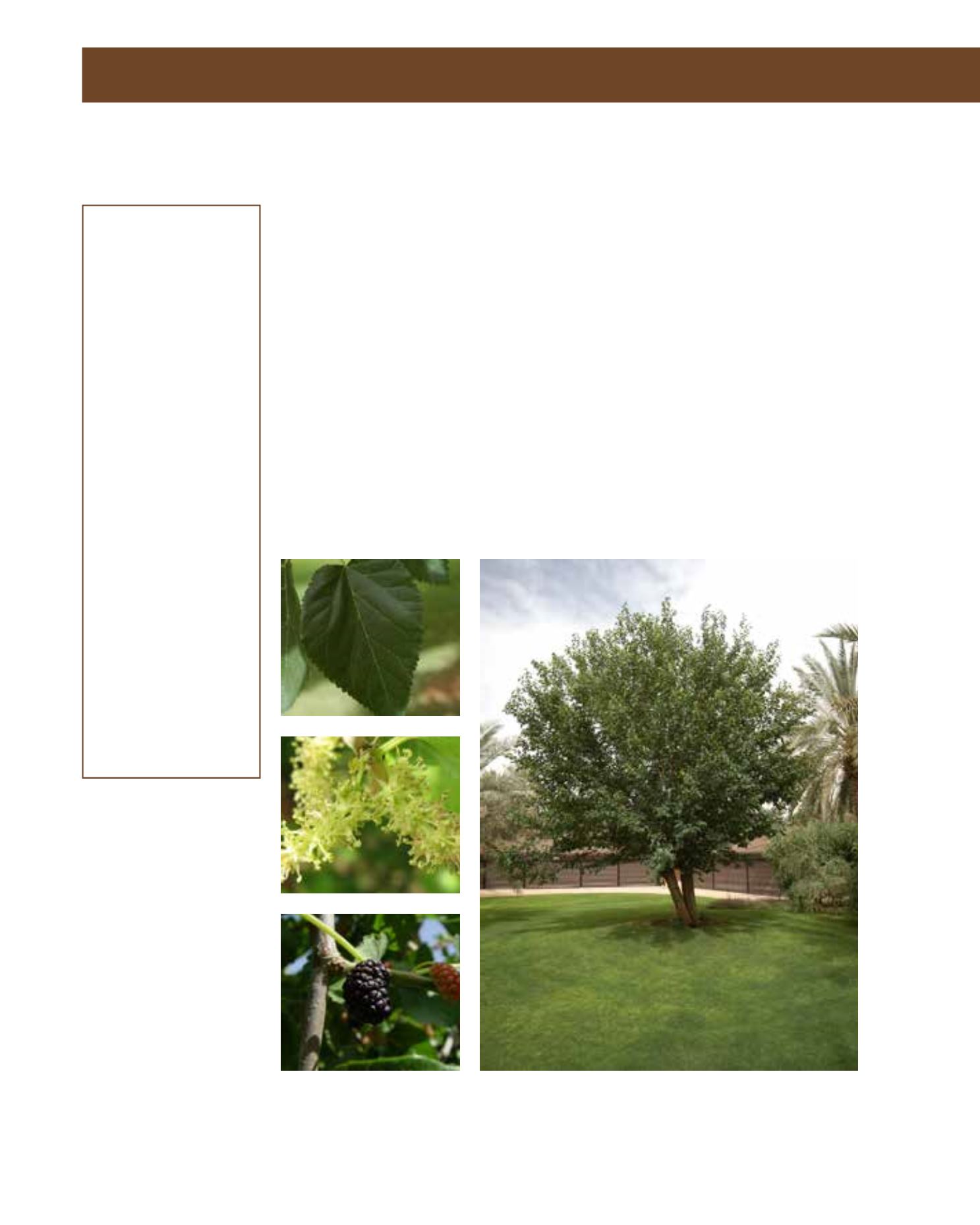

GENERAL
Origin
:
temperate,
sub-Mediterranean,
Mediterranean,
sub-tropical
Humidity
:
semi-arid, semi-
humid, very
humid
Propagation :
sowing and
pricking out,
cuttings
Maintenance :
low
CONDITIONS
Urban climate :
resistant
Dessication :
vulnerable
Stagnant water :
vulnerable
Irrigation
:
medium
Salinity/ppm :
low (700 ppm)
Hardiness
:
-18°C
SHAPE
Type
:
tree
Height
:
6 m-15 m
Spread
:
6 m-15 m
Foliage
:
deciduous
FLOWER
Colour
:
green
Size
:
1.5 cm
Period
:
May - May
FRUIT
Type of fruit :
drupe(fleshy/
juicy)
Fruit size
:
1 cm - 3 cm
Toxicity
:
produced for
food, edible, fruit
Morus nigra has the common name Black Mulberry, in Arabic toot. It is a tree with deciduous
foliage. Black Mulberry originates from West Asia and prefers a temperate climate. Mulberry was
the host of the caterpillar that has been used for the production of silk. It grows to a height and
spread of between 6 and 15 metres. The crown has a round regular shape. The leaves are dark
green and cottony (pubescent) underneath. They are arranged alternately, with an ovate form and
serrate margins. The flower is inconspicuous, but the fruit appears raspberry-like in a black pur-
ple egg-shaped berry. The fruit sap is very intense in colour, a consideration for their use next to
footpaths, because of possible stains on the paving. Fruitless varieties are therefore more suitable
in landscape design. The fruit is edible. The Mulberry likes penetrable, limey soils. The tree is
propagated by seeds. Morus can withstand urban microclimates, but is vulnerable to desiccation.
It therefore needs good irrigation with low salinity. Because of its requirements, the Black Mul-
berry is advisable for more sheltered situations, where microclimates provide air humidity, such
as lawned areas. Morus can suffer from frost, and shelter against frost damage is advisable for
young trees. Its use in urban design can be seen in public open space and park plantations, as well
as in private parks. Morus is appealing as a specimen tree or in grouped planting. The tree has
low maintenance requirements. Normally, pruning is not necessary with this slow-growing tree.
205
Morus nigra,
Moraceae
Black Mulberry,
toot
















